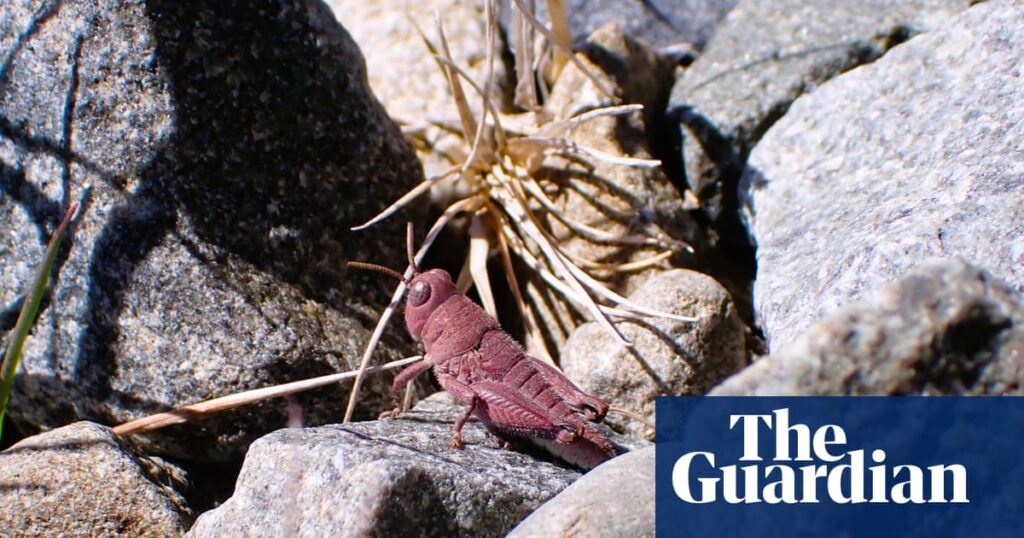
An “exceptionally rare” pink grasshopper has been discovered basking in the sun near a river in New Zealand’s South Island. This unusual sighting occurred during an annual grasshopper survey conducted by a group of Department of Conservation researchers near Lake Tekapo in the MacKenzie Basin.
The pink grasshopper, identified as a female robust grasshopper, is native to New Zealand and is the largest lowland grasshopper species in the country. Typically, these grasshoppers are grey or brown, blending seamlessly with the river stones along the braided rivers of the MacKenzie Basin, their exclusive habitat.
The Significance of the Pink Grasshopper
Jen Schori, a Department of Conservation ranger involved in the survey, expressed her excitement about the discovery. “I’d heard rumours about a pink one but never seen one myself,” she remarked. “It was so exciting. Pink grasshoppers are exceptionally rare.”
The pink hue of this grasshopper is attributed to a genetic mutation known as erythrism, which results in an overproduction of red pigment and a reduction of the usual natural pigment. This mutation makes such sightings exceedingly rare and noteworthy.
There are thought to be just 250-1,000 of the nationally endangered adult robust grasshoppers left, with threats from habitat loss, climate warming, and predators.
Challenges and Conservation Efforts
The robust grasshopper faces numerous challenges. Habitat loss, climate change, and predation have significantly reduced their numbers. These grasshoppers require ample sunlight to warm themselves sufficiently to feed and mature their eggs, with females being about twice the size of males.
“These grasshoppers are so unique. They look almost prehistoric,” Schori explained. Despite their excellent jumping ability in open habitats, they are notoriously poor at landing, making them vulnerable, particularly the conspicuous pink variant.
Schori noted, “The pink one will unfortunately stand out even more to predators, which is why this sighting is so special.” The vulnerability of the pink grasshopper underscores the importance of ongoing conservation efforts.
Innovative Conservation Measures
In 2018, a portion of the grasshopper’s habitat was enclosed within a predator exclusion fence, creating what is believed to be the world’s first insect sanctuary. However, the pink grasshopper was found outside this protected area and will need to “fend for herself.”
Despite the challenges, Schori remains hopeful. “They do live up to their name, they’re quite robust, and the females are double the size of the males,” she said. “Maybe she will breed, and we will see some more pink ones.”
Implications for Future Research
The discovery of the pink grasshopper opens new avenues for research and conservation strategies. Understanding the genetic mutation causing the pink coloration could provide insights into the evolutionary adaptations of the species.
Moreover, the sighting highlights the need for increased conservation efforts to protect these unique creatures and their habitats. As climate change and human activities continue to threaten biodiversity, such discoveries remind us of the delicate balance within ecosystems and the importance of preserving them.
As researchers continue their work, the hope is that more pink grasshoppers will be discovered, contributing to the understanding and preservation of this remarkable species.





